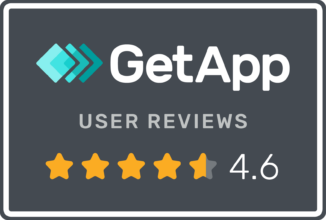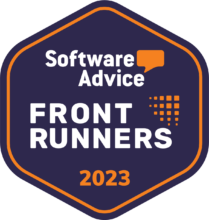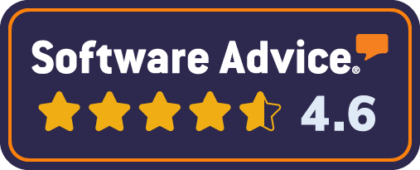Innovate
Your Hiring
with Pre Employment
Assessment Pricing & Tailored Plans
Discover our pre employment assessment pricing and how
cutting-edge solutions can transform your recruitment process
Essentials Plan
Free Plan, Unlimited Users
$0 / Year
Everything in our
No credit card required. Sign up quickly
and securely using Google or Microsoft.
Unlimited Plan
Everything in our Essentials Plan +
Unlimited Assessments. No credit card required.
Cancel anytime
Customized Plan
Let's talk
Everything in our Unlimited Plan +
Schedule a meeting to discuss your needs
Only Want to Buy Test Credits?
Choose from Essentials
& Advanced Credit Packages!
Free Plan
Free Plan, Unlimited Users
4 Essentials + 4 Advanced Included
$0 / Per Credit
Advanced Assesments
Essential Assessments evaluate core skills, personality, and cognitive abilities, offering key insights for roles ranging from administrative tasks to entry-level sales and supervisory positions.
Advanced Assessments
SL Behavioral:
The Sales & Leadership (SL) Behavioral Assessment evaluates a candidate’s personality, work style, and leadership abilities, tailored for sales, executive, and management roles.
IC Behavioral:
The Individual Contributor (IC) Behavioral Assessment evaluates a candidate’s personality, work style, and aptitude, tailored for individual contributor roles like administrative, customer service, and technical positions.
Sales Ability:
The Sales Ability Test assesses a candidate’s interpersonal skills, communication, initiative, sales techniques, and cognitive abilities in the context of sales interactions.
IC Ability:
The Individual Contributor Ability Test (ICAT) evaluates a candidate’s interpersonal skills, communication, initiative, and cognitive abilities, with a focus on individual contributor roles.

Essential Assesments
Essential Assessments evaluate core skills, personality, and cognitive abilities, offering key insights for roles ranging from administrative tasks to entry-level sales and supervisory positions.
Behavioral Essentials
IntegrityFirst:
The IntegrityFirst Test is a pre-hire behavioral integrity assessment that identifies high-risk candidates engaged in behaviors like theft, drug use, hostility, or dishonesty, preventing them from advancing in the hiring process.
Big Five Personality:
The Big Five Personality Assessment evaluates a candidate’s personality fit for various roles by measuring the Big Five traits—Openness, Conscientiousness, Extraversion, Agreeableness, and Neuroticism—along with Sociability, Ambition, Self-Reflection, Expressiveness, and a simple measure of attitude and integrity.
Work Styles DISCovered:
The Work Styles DISCovered identifies a candidate’s behavior type using a standard DISC model, providing detailed insights from each quadrant to offer a clear understanding of their behavioral style.

Custom Assesments
Essential Assessments evaluate core skills, personality, and cognitive abilities, offering key insights for roles ranging from administrative tasks to entry-level sales and supervisory positions.
Only Want to Buy Test Credits?
Choose from Essentials
& Advanced Credit Packages!
Free Plan
Free Plan, Unlimited Users
4 Essentials + 4 Advanced Included
$0 / Per Credit
Compare Plan Features
Assessment Tools for Applicants
Refine hiring decisions with advanced assessment tools.
| Features | Essentials Plan | Unlimited Plan | Customized Plan |
|---|---|---|---|
| 30+ Skill, Integrity, DISC & Behavioral Assessments | Credit Purchase Available | Unlimited Use | Unlimited Use |
| 72+ Interview Question Guides by Job Type | |||
| Candidate Scorecards | |||
| Custom Assessments | - | ||
| Reference Checking | - | ||
| One-way Interviews | - | ||
| Resume to Job Description Matching | - | ||
| Checkr Integration - Background Checks | Per Use Charge | Per Use Charge | Per Use Charge |
| Interactive Skills Tests | Add-on | Add-on | Add-on |
| IntegrityFirst Tests | Add-on | Add-on | Add-on |
Efficient Talent Pipeline Building
Precise solutions for strategic candidate sourcing.
| Features | Essentials Plan | Unlimited Plan | Customized Plan |
|---|---|---|---|
| Free Job Posts on 100+ Job Boards | - | ||
| Sponsor Job Posts | - | ||
| Career Pages | |||
| Social Media Sharing | - | ||
| Employee Referral Marketing System | - | ||
| Recruitment Marketing Videos | $99 per video | 1 Included | Unlimited Use |
| Connect to Any Job Board |
Automated Recruitment Operations
Simplify hiring with cutting-edge automated processes.
| Features | Essentials Plan | Unlimited Plan | Customized Plan |
|---|---|---|---|
| Candidate Self Scheduling | |||
| Hiring Workflow Automations | |||
| Candidate Nurturing Automation | - | ||
| Candidate Management | |||
| AI Powered Job Description Builder | |||
| Recruiting Analytics | |||
| Unlimited Users | |||
| Secure Single Sign-On for Simplified Access | - | ||
| Custom User Permissions |
Collaboration Platforms
Enhance teamwork with innovative communication solutions.
| Features | Essentials Plan | Unlimited Plan | Customized Plan |
|---|---|---|---|
| Gmail & Microsoft Email Integration | |||
| Calendar Integration | |||
| Text / SMS Messaging | - |
Performance Management Tool
Boost team success with advanced performance technology.
| Features | Essentials Plan | Unlimited Plan | Customized Plan |
|---|---|---|---|
| Talent Optimizer |
Hiring Coach
Receive skilled support for experts guidance.
| Features | Essentials Plan | Unlimited Plan | Customized Plan |
|---|---|---|---|
| Personalized Expert Human Support | |||
| Dedicate Hiring Coach | - | ||
| Kingsley AI Hiring Assistant | |||
| FACT Driven Hiring 8 Hour E-Learning | - | ||
| Knowledge Base for Instant Support |
Key Benefits

Pre Employment Assessments
Leverage our tools to make smarter, data-driven hiring decisions. Evaluate candidates on skills, integrity, and cultural fit.

Predictive Hiring Analytics
Use predictive analytics to see which candidates are most likely to succeed in your company.

Custom Solutions
Tailor the recruitment process to fit your organization’s unique hiring needs.
Testimonials
Essentials Plan
Get Started for Free
with AI-Driven Hiring
Unlimited Plan
Start 14-Day Free Trial and
Revolutionize Your Hiring
Customized Plan
Get a Custom Quote for
Advanced Hiring Solutions
Looking for Plan Details or Just Assessments?
Book a Meeting Today!

Frequently Asked Questions (FAQs)
Yes. A written or online assessment test is not that much different from a verbal test in an interview. Both a written question and a verbal question can be legal or illegal. If pre-employment assessments in general were illegal, you wouldn’t see 80% of all companies big and small using them in this litigation prone environment. After 26 years and hundreds of thousands of assessments having been completed, we have never had a legal or government problem with The Hire Talents Assessments.















